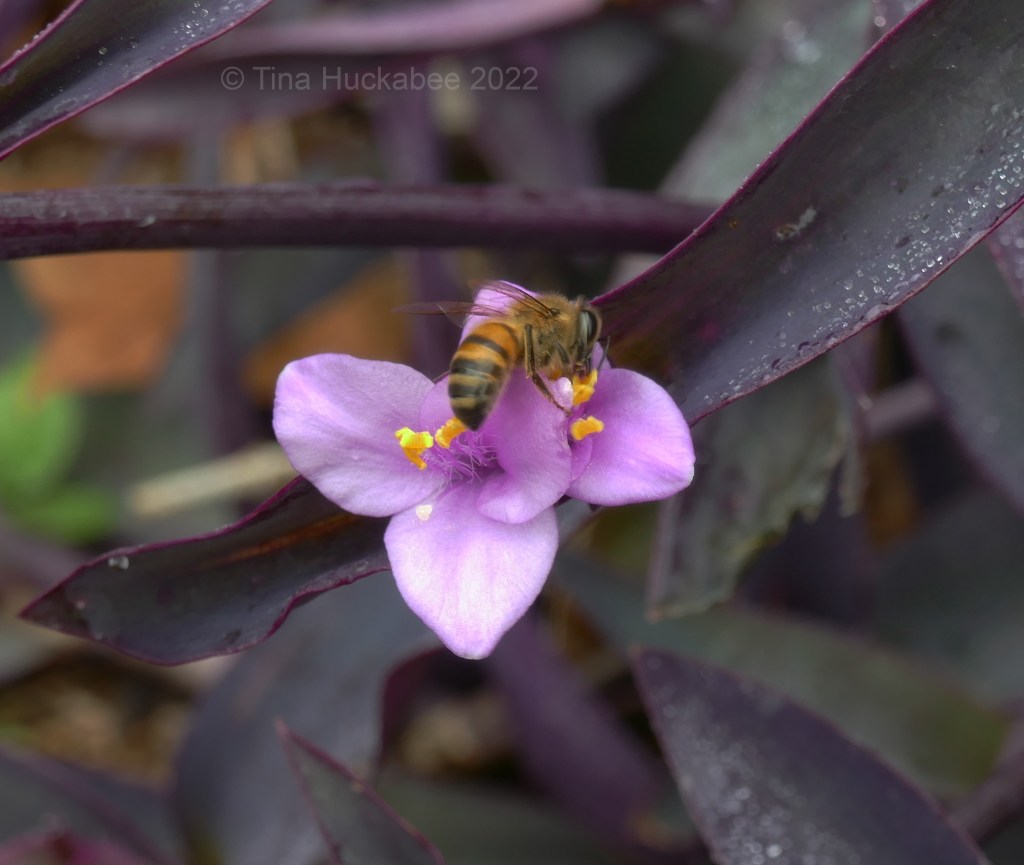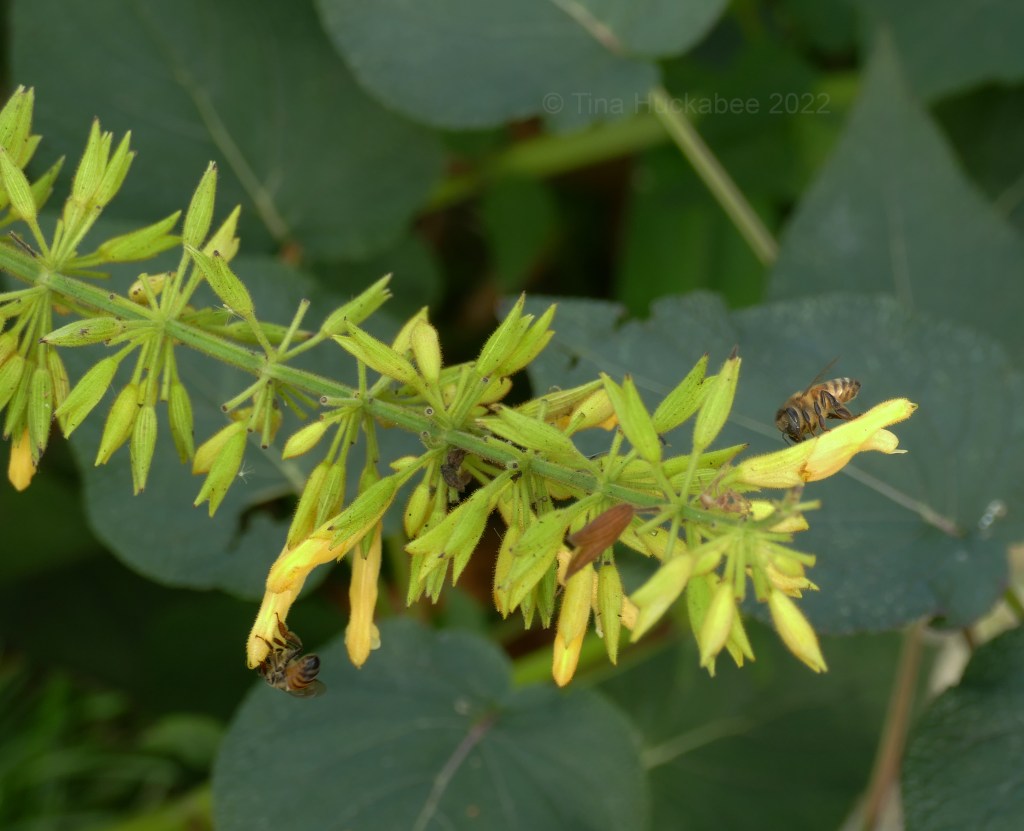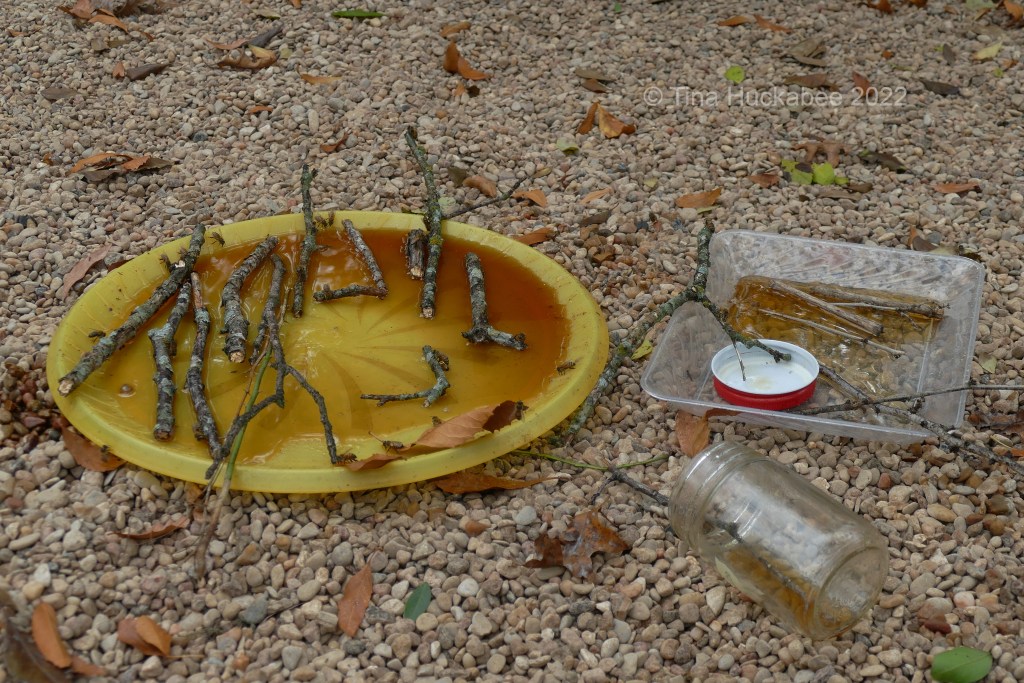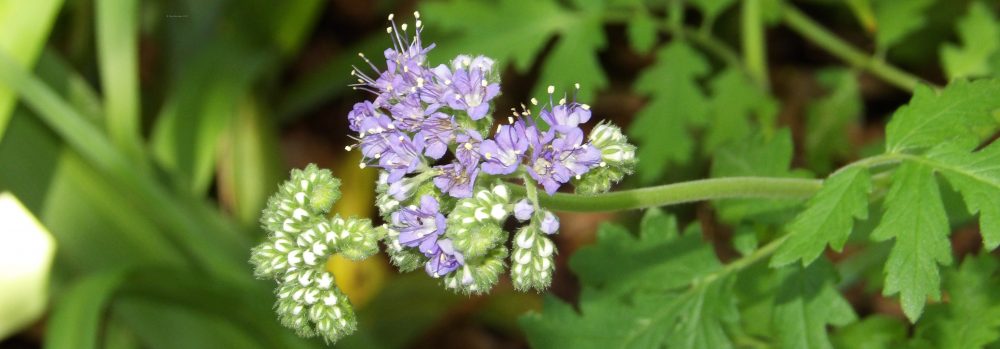Winters here in Central Texas are mild, punctuated from time-to-time by cold snaps which typically don’t last long. This winter has been historically warm and the honeybees have remained busy with their obsessive collecting of nectar and pollen for the hive. Before winter made an appearance last week, there were still a few blooms available and the bees were all in. These little gals are collecting pollen from the pretty pink flowers of Purple Heart, Setcreatsea pallida.


At the last blooms of Forsythia Sage, Salvia madrensis, these two are sipping nectar, using a process called nectar stealing or nectar robbing. This is a foraging activity where an insect doesn’t crawl into the flower to nectar, but instead bites or pokes a petal and sticks its proboscis through, directly sipping nectar and bypassing pollination. Interestingly, until this year, I hadn’t seen honeybees on this sage, only native bees, particularly the Horsefly-like Carpenter bee, Xylocopa tabaniformis.

Before the sage’s bloom cycle was ended by the blast of cold last week, honeybees, alongside one or two Mexican Honey wasps, Brachygastra mellifica, and a couple of small skippers, were the main pollinators visiting these yellow lovelies.
The blooms are gone now, the plants freezer-burned and dormant. In my garden, there is little for the bees to forage on. Honeybee activity slows during winter, but they still need to exit the hive to pee and poo and they’re driven to forage for whatever they can find in this flower limited period of the year.
When we last checked the hive in mid-October, Bo-Peep’s second (top) brood box was honey-bound and its honey box (the top-most box) had several frames of honey, but it wasn’t full. That’s probably enough honey until spring, especially given the protracted blooming in autumn and winter. Even so, I always fret in winter: do they have enough to sustain through winter and when do I add some supplemental feedings?

A couple of weeks ago, I decided to open a bottle of honey and let the bees have at it. It took them one full day and part of the next to clean up the trays where I’d poured the gooey goodness, but like good girls, they cleaned their plates. That’s a quandary: should they get dessert? After honey, what would that be?

You might wonder about the sticks on the platters. I place sticks across the honey so that the bees have something to crawl on as they’re eating. Otherwise, at least a few drown in the gooey goodness. Sad, but at least they die happy.
For January and February, once a week or so, I’ll be mixing a bottle of sugar water (a 1:1 ratio of sugar to water) as a feeding supplement. If the hive was larger and more established, I probably wouldn’t bother, but I suspect Bo is just young enough to need some extra feeding during this time before the first spring blooms appear. I won’t feed more often than once per week because I don’t want to encourage the queen too much, so that she decides its time to get busy with new brood and ramps up for spring egg laying. That’ll come, but I prefer to delay that until mid-to-late February. That said, the queen will do what weather conditions and her DNA demand and she probably won’t consult me about her decisions.

With cooler temperatures, I finally covered the bare ground of the bee ‘yard’ with a thick layer of newspaper, topped with an equally deep layer of pea gravel. Going forward, when we check the hive(s) after a rain, we won’t come away with mud-bound shoes.

Instead, there’s always at least one rock wedged in the treads of my shoes.

It’s always something.

Tina, Happy New Year 2022 !!! Tina I’m sorry I haven’t written in so long, but she’s still very bad with depression.
Here in Spain we also have a mild winter as a whole: on New Year’s Eve we were in Madrid at 17ºC: crazy! Now it seems that the temperatures are winter after a wave of snow and rain. I am very happy to hear from your bees and that they are so busy eating and collecting nectar for their hive, so well prepared for the cold, in the divine flowers of your garden. How well you feed them with honey on the plate and with little sticks so they don’t choke, I love it. How well you take care of them !!!! Tina I hope that you and Bee Daddy are in very good health and that your back improves. Take good care of both of you and be very careful with the Covid omicron variant. I wish you good health for the new year, that all your wishes come true, much love and all the best. Very affectionate greetings from Margarita.
LikeLike
Wishing you a happy and healthy 2022, Margarita and I hope you’re feeling better. Take care and stay safe!
LikeLiked by 1 person
Tina thank you very much for everything. You are a friend. I really like your blogs and they cheer me up and make me smile, and also “talk” to you. Take care. Very affectionate greetings from Margarita.
LikeLiked by 2 people
As you saw on my post, I have lots of bees visiting. They are back to drinking the hummingbird sugar water. I actually had a male Rufus Hummer visit, but I only saw him once. We are back to sunny days.
LikeLike
I have nothing for the poor pollinators, but I’m sure some spring blooming trees will be in action within a few weeks, weather dependent, of course!
LikeLiked by 1 person
Sweet post! 😉
You’re a good steward to your girls. ❤
LikeLike
Sweet and sticky!
LikeLiked by 1 person
Nice! I miss the bees during our bitter cold winters. It’s always a thrill to see them reappear in the spring. 🙂
LikeLike
Yes, it’s nice with life is renewed. We do see some pollinators throughout winter, but certainly fewer than at other times of the year.
LikeLike
When you put honey out for the bees, do you make it a point to use local honey rather than something off the grocery store shelf? It makes sense to me that they’d do better with honey made from flowers local to your area, although I suppose any would do. And when you say “a bottle of sugar water,” do you hang it, like a hummingbird feeder? Inquiring minds want to know!
LikeLike
I use my own honey! Well, actually it’s their honey! Honeybees should never, ever be fed store bought honey. Apparently, it can contain bacteria that is harmful. I only feed them their own honey, which is really a mixture of honey from our various hives, or the sugar/water mixture. If you look at the last two photos, at the entry to the hive there is an upside-down bottle perched in a holder. The bottle has a lid with holes and the liquid drips out as the bees slurp up. I didn’t take the photo until the bees had finished the bottle’s liquid. Once they’re done, I remove it, wash it in the next load of dishes and (probably tomorrow) make more to put out on Wednesday.
When we hive a new colony, we feed through the first month or so, depending on how well the spring blooming is going. We also have a feeder that fits into the hive, which holds a gallon of sugar water. A few years ago, we’d hived a new colony and they were making good progress building comb and making honey stores, so were toward the end our needing to feed them. But, we were heading out for a 15 day trip and we wanted to make sure they continued the good progress. We filled the internal feeder (which takes about a week for them to finish) right before we left for a 15 day trip. My SIL then fed the bees with 2 o 3 bottles that we left in our fridge, replacing them as needed. It worked out well. I left her my bee suit and gloves and she had no issues taking the empty bottle from the holder and replacing with the full bottles.
LikeLiked by 1 person
Oh — right! Of course you’d have honey for your bees; it’s only right that they should get a dividend for all that work!
LikeLike
If the carpenter bee you mentioned inhabited Afghanistan, its scientific name would be Xylocopa talibaniformis.
LikeLike
We don’t raise bees but I’ve been wondering what I can do for them in the winter. Especially with it getting cold for the next few days. All the rain we got last night and it’s supposed to be in the 20’s the next few days. My yard is dormant now and I am a little concerned for the poor critters.
LikeLiked by 1 person
In really cold weather, the bees won’t forage. As we warm up and there’s nothing, or not much, for them to sip nectar from, you can put out a shallow plate of 1:1 sugar/water. They’ll love it. Place some sticks across the liquid so that the bees can sip and not drown. Or at least, fewer of them will drown. Thanks for caring about the bees!
LikeLiked by 2 people
Fantastic! Thank you for the info. Stay warm 🙂
LikeLiked by 1 person
You too!
LikeLiked by 1 person